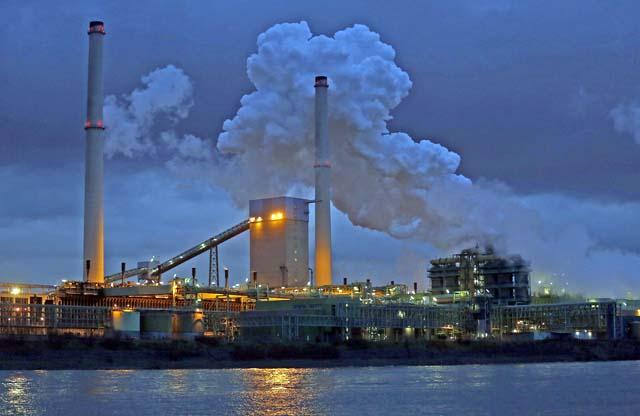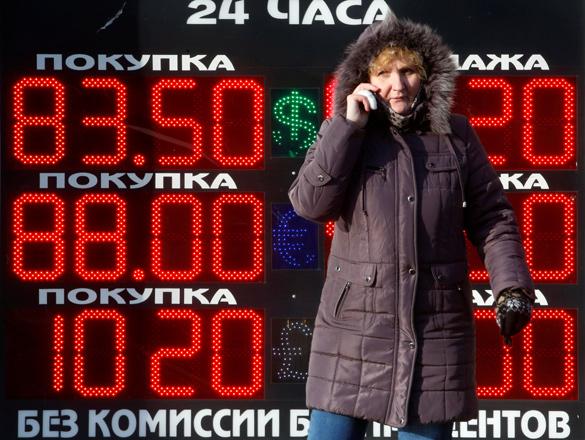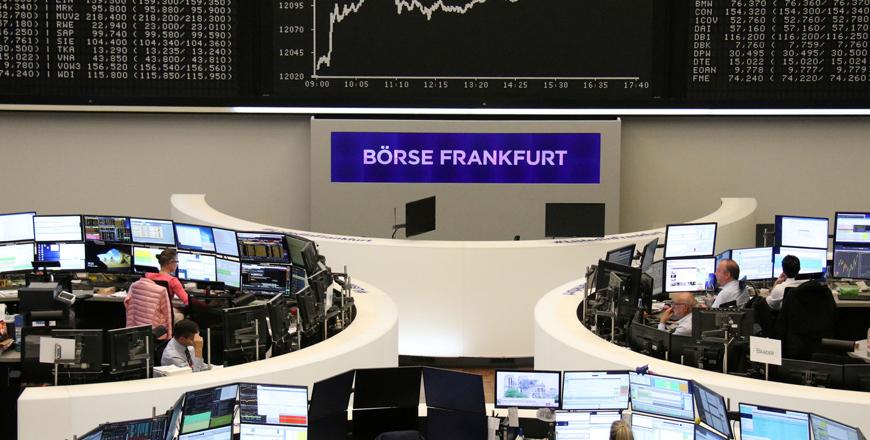FRANKFURT/PARIS — Europe’s corporate profits are still eroding but investors are at last starting to see glimmers of hope, with revenues picking up, domestic demand recovering and good news from exposure to the United States making up for bad news in emerging markets.
Recent weakness in emerging markets — which hit a number of European multinationals such as Nestle, AB InBev and Holcim — could delay the long-awaited European earnings recovery, but probably won’t derail it.
European companies have been aggressively reducing costs and cleaning up their balance sheets in the past few years. They are slowly starting to reap the benefits as global growth recovers, driven by the improved momentum in developed countries.
Half way into Europe’s earnings season, headline numbers are still dire: Restructuring costs and currency factors helped drive profits nearly 5 per cent lower in the quarter compared to the fourth quarter of 2012.
But a pickup in corporate revenue, up 2.3 per cent, is fuelling investors’ hopes that the worst days are over.
Results have been good compared to analyst expectations, with 58 per cent of companies reporting profits in line or higher than forecasts — Europe’s best score since the third quarter of 2012, according to Thomson Reuters StarMine data. And surveys of business such as the Purchasing Managers’ Indexes (PMI) are upbeat.
“The European PMIs for January were very good, especially the figures for Germany. There’s no doubt things are getting better in Europe,” said Ollie Beckett, fund manager at Henderson Global Investors, which has £70.8 billion ($118 billion) in assets under management.
“Europe has just been through two-three years of severe cost cutting, so as soon as the European economy picks up a bit, it will spark a big bounce in profits,” he added.
Positive signals
Domestic demand is the key to a recovery. Data showed last week that the eurozone economy grew 0.3 per cent in the fourth quarter of 2013, more than expected, after a 0.1 per cent rise in the third quarter.
Companies across the region — including cancer drugmaker Roche, telecom major Vodafone and the world’s biggest steelmaker ArcelorMittal, recently cited early signs of improvement in Europe which should bolster earnings.
“Europe is still tough but there are a number of lead indicators,” Vodafone Finance Director Andy Halford told reporters this month, and ArcelorMittal forecast European steel demand would return to growth this year.
Banks including Spain’s Santander, the eurozone’s biggest lender, France’s Societe Generale and Dutch group ING have also reported improved earnings as they shed bad debts and losses they suffered in the global financial crisis.
Even the overall year-on-year fall in profits was not necessarily bad news for investors: Much of it was due to one-off restructuring charges, which should leave companies in a better position in the future.
For example, ThyssenKrupp posted a better than expected quarterly operating profit on Friday, despite a net loss because of one-off charges related to the sale of a stake in Finnish steelmaker Outokump.
Big banks like BNP Paribas and Credit Suisse saw profits hit by costly legal settlements, but that removes future litigation risk.
There is still ample room to recover. Europe’s corporate profits overall are still 23 per cent below their peak of 2008, while US corporate profits have rebounded to 23 per cent above their 2008 peak, according to Thomson Reuters Datastream data.
“Just a bit of economic growth would be enough to spur a big rebound in corporate profits because of improved operating leverage,” said Mathieu L’Hoir, strategist at AXA Investment Managers, which manages 536 billion euros ($727 billion).
“In Europe, profit margins are still around 5.5 per cent, versus 9 per cent before the economic crisis, while in the US, margins are already back to 9 per cent. A rise to 7.5 per cent in margins in Europe would spark a 40 per cent bounce in profits,” he indicated.
Even troubled southern Europe, where demand collapsed at the start of the eurozone debt crisis, is starting to show signs of recovery, some analysts say.
“A strong domestic growth recovery is likely to be the largest source of upside surprise for the Southern European economies,” Deutsche Bank strategists said this month.
Roller-coaster ride
in emerging markets
But an improving European economy has not filtered through to everyone yet, with food makers and retailers in particular still hurting as shoppers’ disposable income is squeezed by subdued wage growth and austerity measures.
Nestle has warned that 2014 would be another challenging year as weaker emerging markets demand adds to pain from pricing pressure at home.
Europe’s No.1 retailer Carrefour saw its sales in Europe shrink last quarter due to a tough market environment from Italy to Poland, in addition to being hit by a deterioration in Brazil and China, the two major emerging markets it has earmarked for expansion.
“We’re just coming out of a deep recession, and you’re going to need a longer than normal period of decent growth in gross domestic product before you are likely to see significant earnings improvements,” Macquarie analyst Daniel McCormack warned.
“Also, demand from emerging markets is more sluggish than expected. Growth there is weaker, and there is less pent-up demand than in the last cycle,” he indicated.
European bluechips are more exposed to emerging market weakness than American and Japanese peers. According to data from MSCI, companies listed on the MSCI Europe index have about 24 per cent exposure to emerging markets, versus 15 per cent for MSCI USA and 14 per cent for MSCI Japan.
Swiss engineering group ABB, among those saying it saw more encouraging growth in many parts of Europe, has cut its medium-term sales outlook, citing a more cautious stance on emerging markets.
In addition, many European companies’ sales and earnings have been hurt by the drop of currencies from the Japanese yen to the Indian rupee or the Australian dollar against the euro.
HeidelbergCement, the world’s fifth-biggest cement maker, has for instance warned that exchange rate fluctuations would continue to impact its earnings this year after a weaker Indonesian rupiah and Australian dollar caused it to fall short of its own targets for 2013.
But for many European companies, bad news from emerging markets is offset by good news from exposure to the unexpectedly robust United States. Belgian supermarket group Delhaize, which makes about 60 per cent of its revenues in the United States, surpassed expectations for sales growth there in the fourth quarter.
Overall, global investors are increasingly positive about Europe’s prospects, reflected in huge inflows into the region.
Data from Thomson Reuters Lipper shows that US-based funds have poured $4.1 billion into European equities since the start of the year, $778 million in the past week alone, a 33rd straight week of net inflows — marking the longest streak of weekly inflows since Lipper started to monitor flows in 1992.





















